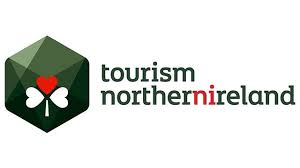Explore the Normandy beaches on a D-Day 80th anniversary tour
2024 was the 80th anniversary of D-Day, when Allied troops landed on the beaches of Normandy in France in a dramatic operation to liberate Europe and to bring an end to World War Two. 156,000 US, Canadian and British infantrymen and 23,000 paratroopers came ashore in the largest seaborne invasion in history. For those who have parents, grandparents, relatives or friends who were involved in D-Day, Normandy is a highly poignant place to visit.

 Jake Larson - Normandy Colleville US Cemetery, 2019 © 2023 NormandyONTour – All rights reserved
Jake Larson - Normandy Colleville US Cemetery, 2019 © 2023 NormandyONTour – All rights reserved
The events of D-Day on 6 June 1944 were a turning point of World War Two, as Operation Overlord saw tens of thousands of Allied troops landed on the beaches of Normandy at the start of a campaign to free Europe from Nazi tyranny.
The first phase of Operation Overlord, the amphibious invasion and establishment of a secure foothold on the French coast, was codenamed Operation Neptune. Five main landing sites on the Normandy coast were chosen for the landings and codenamed Utah Beach, Omaha Beach, Gold Beach, Juno Beach and Sword Beach. The Americans were assigned to land at Utah Beach and Omaha Beach, the British at Gold and Sword, and the Canadians at Juno.
 Remembering the fallen of the US Sector
Remembering the fallen of the US Sector
D-Day and the Battle of Normandy were predominantly fought in the French départements of Calvados, Manche and Orne and these are the locations for the many memorials, cemeteries and museums that commemorate the events of D-Day. The landing beaches, which can be visited on your tour, extend for over 50 miles along the coast, from Sainte-Marie-du-Mont in the west to Ouistreham in the east, via Colleville-sur-Mer and Arromanches-les-Bains.
Utah Beach
Stretching from Sainte-Marie-du-Mont to Quinéville, the Utah sector was key to the strategy of capturing the vital port of Cherbourg. The Utah Beach D-Day Museum, built on the spot where the landings took place, takes visitors through the events of 6 June and is a good place to start your tour.
 Re-enactors at Utah Beach
Re-enactors at Utah Beach
Omaha Beach
Two thirds of the seaborne troops from the United States were launched against a four-mile-long beach bordered by a steeply sloping shoreline and blocked off at either end by limestone cliffs, in the place that came to be known as ‘Bloody Omaha’. The focus for many for an exploration of the Omaha Beach sector is the Overlord Museum - Omaha Beach, which boasts a unique collection of over 10,000 exhibits, including 35 vehicles, tanks and guns.
 Normandy American Cemetery
Normandy American Cemetery
Located on the coast between Arromanches and Grandcamp Maisy, the Normandy American Cemetery is a vast 70-hectare site overlooking Omaha beach. It brings together the graves of 9,387 soldiers fallen in combat.
Gold Beach
The British 50th Northumbrian Division landed on Gold Beach on D-Day and by the evening were on the outskirts of the town of Bayeux, which they liberated the next day. The D-Day Landing Museum in the town of Arromanches-les-Bains, at the geographical centre of the D-Day beaches, was opened in 2023, replacing the very first D-Day Museum which stood on the site for 70 years. The state-of-the-art attraction is now a hub for those visiting the Normandy Beaches and overlooks the remains of one of the original artificial Mulberry harbours which were constructed for the landings.
 Gold Beach
Gold Beach
The British Normandy Memorial stands just outside the village of Ver-sur-Mer, overlooking Gold Beach. It was unveiled on 6 June 2021, the 77th anniversary of D-Day, and it is dedicated to the soldiers who died under British command during the Normandy landings.
No tour of this part of Normandy would be complete without a visit to the medieval gem of Bayeux, which remarkably was left virtually unscathed by World War Two. An excellent base for those visiting the D-Day beaches, the town is famous for the incredible Bayeux Tapestry, which should not be missed.
 Medieval Bayeux
Medieval Bayeux
Bayeux served as a base for the British Army during the Battle of Normandy, and the British War Cemetery in Bayeux is the largest British military cemetery of the Second World War in France, holding the remains of 4,000 British and 181 Canadian soldiers.
Juno Beach
On D-Day, 14,000 Canadians and 6,400 British troops landed on Juno Beach, taking heavy casualties. At Courseulles-sur-Mer, the Juno Beach Centre is the only museum entirely funded by veterans and their charities and is devoted to commemorating Canada’s unique contribution.
 Juno Beach
Juno Beach
The Canadian War Cemetery in Beny-sur-Mer is the resting place of over 2,000 Canadian soldiers who fell on Juno Beach or in the fighting on the advance to the interior.
Sword Beach
‘Sword’ was the code name for the most easterly beach in the Normandy Landings, which was assigned to the British and extends west from Ouistreham to Lion-sur-Mer.
One of the most important sites to visit in the Sword sector is Pegasus Bridge. Pegasus Bridge was the first engagement of D-Day when, on the evening of 5 June, a small British airborne force in six gliders landed near the bridge and, after 10 minutes of fierce fighting, captured it for the Allies, cutting off a vital route for German troops to reach Sword Beach.
 Pegasus Bridge
Pegasus Bridge
The original Pegasus Bridge is now in the grounds of the Pegasus Museum, which was inaugurated by the Prince of Wales (now King Charles III) in 2000. The museum, which is located in Ranville between the city of Caen and the coast, tells the story of the dramatic military operation.
Getting there and getting around
It’s possible to reach this part of Normandy from Paris within two hours by fast train to the city of Caen, or in three hours by road, and indeed Caen is a popular base for a tour of this part of Normandy. The ancient city is well worth a visit, with its charming medieval streets and half-timbered houses. Once a strategic centre for William the Conqueror, Caen Castle is one of the biggest medieval fortresses in Europe.
It is also entirely possible to combine a trip to the Normandy Beaches with a tour of England, which is just a five-hour journey by boat across the English Channel.
 A tour of the Normandy Beaches with NormandyONTour
A tour of the Normandy Beaches with NormandyONTour
Once in Normandy, there are lots of ways of getting around the D-day sites, whether by road or rail, but to get the most out of your visit we would recommend taking a driver-guided tour. We work with expert guides who are extremely knowledgeable about the Second World War history of Normandy and the events of D-Day and we can offer your group a tailored experience which reflects your personal interest in the Normandy Landings.
Please do contact our friendly team today and we will create the perfect tailor-made itinerary for you or your group. Read more about our tours to Europe.
All photos © 2023 NormandyONTour – All rights reserved
































